Table of contents
- How can you tell if there is spyware app file on your Android
- List of common Android spyware file names
- 1. PhoneSpector
- 2. FlexiSpy
- 3. SpyEra
- 4. XNSPY
- 5. Auto Forward
- 6. Highster Mobile
- 7. Spyzie
- 8. Cocospy
- 9. mSpy
- How to protect your Android from spyware files
- 1. Install software and phone updates
- 2. Remove suspicious apps
- 3. Activate Google Play Protect
- 4. Factory reset your phone
- 5. Use two-factor authentication
- Conclusion
How can you tell if there is spyware app file on your Android
Spyware apps on Android hide in the background, draining your phone’s resources and stealing your data. That’s why it’s so important to know how to detect spyware on Android phones. Luckily, there are a few warning signs—here’s what to look out for:
- Your phone overheats, and the battery drains faster than normal. Spyware runs in the background of your phone, using up its processing power. This often means your battery will drain quicker, and your phone will get hot, even when idle.
- You see sudden spikes in data usage. If you’re using more mobile data than usual, it could be because a spyware app is sending your data to the hacker.
- There are unfamiliar apps in your list. Strange apps you don’t remember installing could be spyware. It hides under generic names, pretending to be common apps or system processes.
- Your phone is lagging or glitching out. Spyware slows down your phone, makes apps crash, and causes strange things to occur. If you notice suspicious bugginess—like screen captures, switching apps, or recordings you don’t remember—it could be spyware.
- You receive strange texts and notifications. Some spyware uses SMS messages to communicate and receive commands. Odd texts are a sign that the spy software has taken over your messaging app.
If you’ve noticed any of these signs, perform a spyware scan right away with Clario Anti Spy. It’ll find any common spyware tools, helping you restore your privacy.
Here’s how to perform a Clrio Anti Spy’s Spyware scan:
- Open Clario Anti Spy and sign in to your account.
- Press Fix beneath Spyware scan and wait for Clario Anti Spy to check your device for suspicious apps.
- If it finds anything dangerous, follow the on-screen instructions to remove the spyware and secure your device.
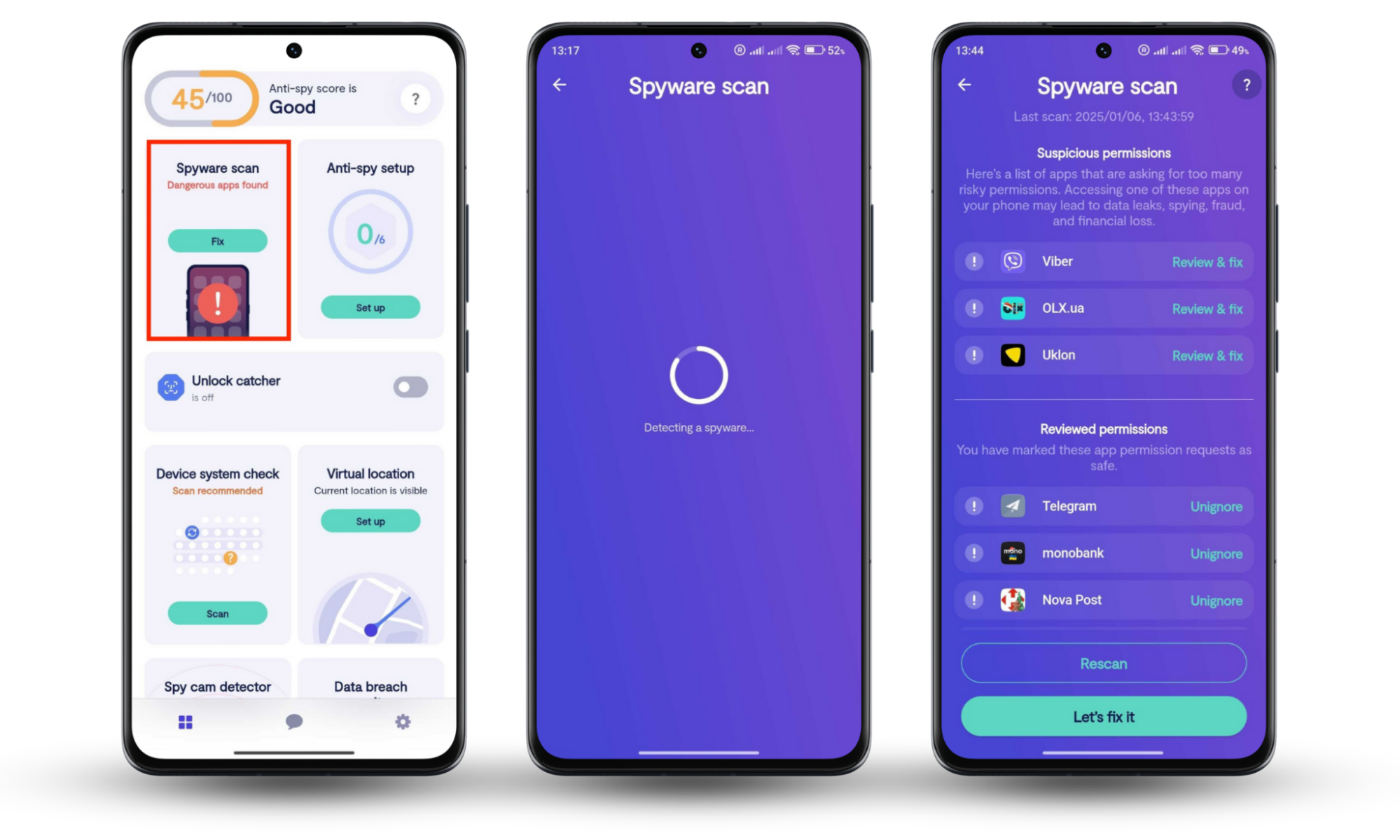
Next, we’ll explore what apps spy on you so you know exactly what to look for if you think it’s compromised your device.
List of common Android spyware file names
There are hundreds of types of spyware floating around on the internet, and you’ll never encounter most of them. However, you may notice the common Android spyware files—like PhoneSpector, FlexiSpy, SpyEra, XNSPY, Auto Forward, Highster Mobile, Spyzie, CocoSpy, and mSpy—as they’re becoming far more popular with hackers, scammers, and stalkers. Protect yourself against spyware with the best anti-spyware for Android.
Let’s explore each of these examples of spyware apps in more detail.
1. PhoneSpector
PhoneSpector is a tracker that monitors almost everything you can do on your phone. It’s commercially available and doesn’t require rooting for someone to set it up. PhoneSpector can track:
- Call logs and call history
- Text messages (even deleted ones)
- GPS location in real-time
- Browsing history
- Social media activity
- Photos and videos
- Installed apps and app usage
- Calendar events and notes
- Contact lists
- Emails (if synced)
Once active, it quietly runs in the background and sends your data to a remote dashboard. Because of this, it’s mostly marketed to people trying to monitor a partner or employee without detection.
2. FlexiSpy
FlexiSpy is one of the most powerful and invasive spyware programs on the market. It’s focused on deep surveillance and provides invasive features for corporate spying and partner tracking.
FlexiSpy can track:
- Live call listening and call recording
- Text messages, including deleted ones
- GPS location tracking with route history
- VoIP call logs and recordings
- Microphone activation for ambient recording
- Camera access for taking silent photos
- Keylogs and clipboard data
- Email and browser history
- Installed app list and usage stats
- Calendar entries, contacts, and notes
- Remote screenshot capture and device control
FlexiSpy requires more technical knowledge to install (and often needs rooting), but once in place, it's extremely difficult to detect without a professional scan. It also offers a web dashboard for remote access and data management.
3. SpyEra
SpyEra is a high-end spyware tool built for full device surveillance. Employers and controlling partners use it to gain access to a phone’s data and activity. It runs in stealth mode and syncs everything to a remote dashboard.
SpyEra can track:
- Live call listening and full call recordings
- Text messages and MMS, including deleted content
- GPS location with live tracking and movement history
- Chats on WhatsApp, Facebook Messenger, Line, Viber, and more
- Microphone activation for ambient audio recording
- Silent camera access to take photos or record video
- Browsing history and bookmarks
- Emails sent and received
- Installed apps and usage patterns
- Calendar events, notes, and contacts
- Access to saved media files like photos, videos, and audio
SpyEra offers remote uninstalls and real-time data sync. Once installed, it gives the attacker near-total control and leaves no visible trace on the phone.
4. XNSPY
XNSPY is a stealth monitoring app that gives stalkers remote access to your phone’s data through a simple dashboard. Most of its features work without rooting, meaning it’s easy to install if a hacker gets access to your phone.
XNSPY can track:
- Call logs and recordings of all phone calls
- Real-time GPS location and travel history
- Text messages and deleted conversations
- Email content and browsing history
- Messaging apps
- Screen time and app usage habits
- Keystrokes with a built-in keylogger
- Contact lists, calendar events, and notes
- Wi-Fi connection history
- Remote functions like locking the phone, wiping data, or triggering screenshots
XNSPY hides under system-level permissions and uses generic names to avoid detection.
5. Auto Forward
Auto Forward is a basic spyware tool that gives quick, no-root access to your phone’s activity. It doesn’t require much technical skill to install, meaning it's popular with jealous partners and stalkers.
Auto Forward can track:
- Call logs and contact details
- Text messages, including deleted threads
- GPS location and movement history
- Photos, videos, and saved files
- Social media activity
- Browsing history and bookmarked pages
- Emails and email attachments
- Installed apps and app usage
- Calendar appointments and stored notes
Auto Forward disguises itself using system-style names and doesn’t appear in the regular app list. Once set up, it collects a wide range of data and sends it to a remote control panel.
6. Highster Mobile
Highster Mobile is a monitoring app that’s available as a one-time purchase, rather than subscription. It lacks advanced features, but has a quick no-root setup and spies can use it to track your sensitive information easily.
Highster Mobile can track:
- Call logs
- Sent, received, and deleted SMS
- GPS location updates with map view
- Photos, videos, and other stored media
- Internet history and bookmarked sites
- Social app usage
- Contact names and numbers
- Installed applications
Once installed, Highster Mobile hides itself using system-level permissions and is easy to miss without a proper spyware scan.
7. Spyzie
Spyzie markets itself as a parental control tool, but it’s often used for covert surveillance. It focuses on remote access over advanced stealth—but it can still collect large amounts of private data without alerting you.
Spyzie can track:
- Call logs and message history
- Real-time GPS location and location history
- SMS and messaging content ( WhatsApp, LINE, and Kik)
- Media files
- Contact lists, calendar events, and notes
- App installation activity and screen time
- Web history and saved bookmarks
While it may not be as deeply hidden as higher-end spyware, it still uses fake names and hides from the app list.
8. Cocospy
Cocospy is another spyware app that disguises itself as a parental control tool. It focuses on tracking messages and GPS activity, making it the go-to option for stalkers interested in your real-time movements.
Cocospy can track:
- SMS and call logs, including timestamps and contact info
- GPS location with live tracking and route history
- Social media messages
- Media files
- Browsing history and bookmarks
- Installed apps and usage behavior
- Contacts, calendar entries, and saved notes
Cocospy hides itself under system-level permissions and doesn’t display icons or notifications. It quietly uploads data to a web-based dashboard, giving the person who installed it constant remote access.
9. mSpy
mSpy is one of the most common spyware apps found on Android devices. Like the others in this list, it advertises itself as a parental monitoring app but can track everything you do without requiring root access.
mSpy can track:
- Calls and SMS
- Real-time GPS location
- Private chats from WhatsApp, Snapchat, Telegram, and more
- Saved media files
- Browsing history and bookmarks
- Contacts, calendar events, and notes
- Installed apps and how you use them
- Keystrokes and copied text (if rooted)
Like most spyware, mSpy hides behind generic names and doesn’t show up in your app drawer. Unless you scan your device or know exactly what to look for, you probably won’t notice it’s there.
How to protect your Android from spyware files
The best way to protect your Android against spyware and other viruses is to use Clario Anti Spy. Follow the instructions above to perform a Spyware scan, then use Clario Anti Spy’s Device system check feature to find and remove security vulnerabilities on your phone.
To avoid falling victim to one of these spyware apps, here’s what else you can do to find hidden spy apps on your Android.
1. Install software and phone updates
Outdated software makes your phone vulnerable to infection, especially with known bugs in older versions of Android.
To check for updates:
- Open Settings and look at the top of the menu for an alert about updates. If any are available, install them immediately.
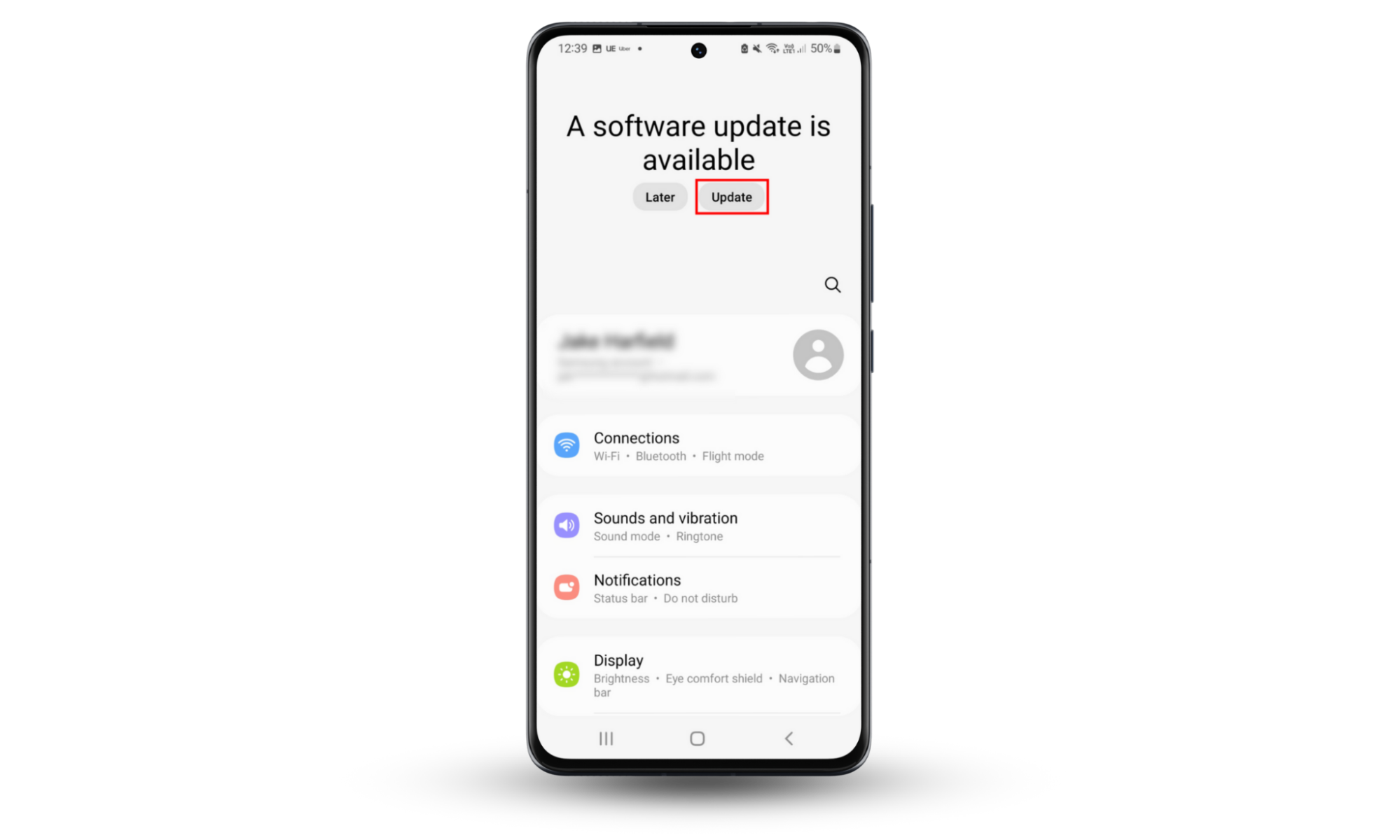
2. Remove suspicious apps
If you spot one of the Android spy app file names, remove it right away.
To remove suspicious apps:
- Open Settings > Apps.
- Scroll through the list and remove any you don’t recognize by tapping their name and pressing Uninstall.
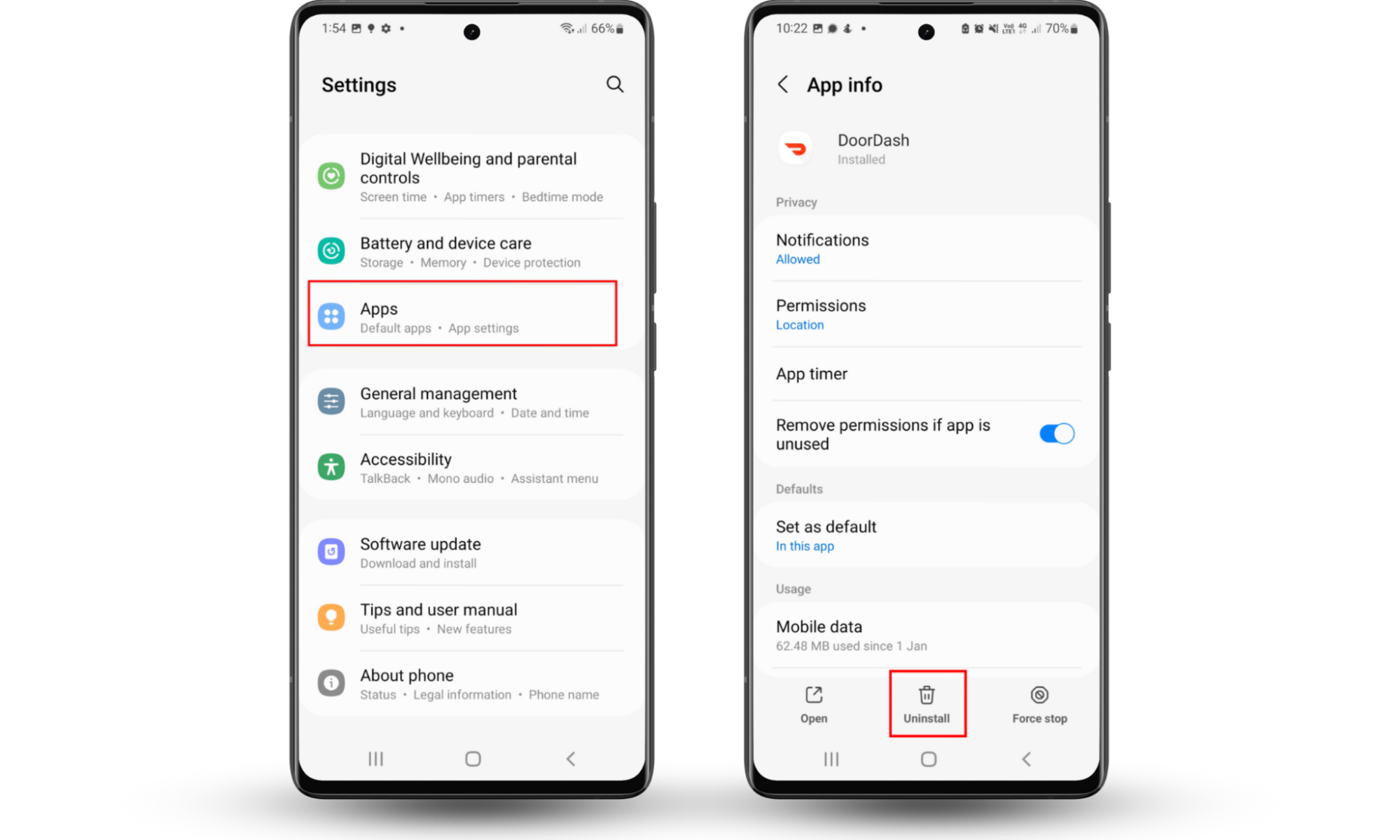
3. Activate Google Play Protect
Google Play Protect is Android’s built-in malware scanner. It won’t catch everything (like Clario Anti Spy can), but it’s a good first line of defense against malicious tracking apps.
To turn Google Play Protect on:
- Open Google Play Store.
- Tap your profile icon > Play Protect.
- Choose Settings and turn on Scan apps with Play Protect.
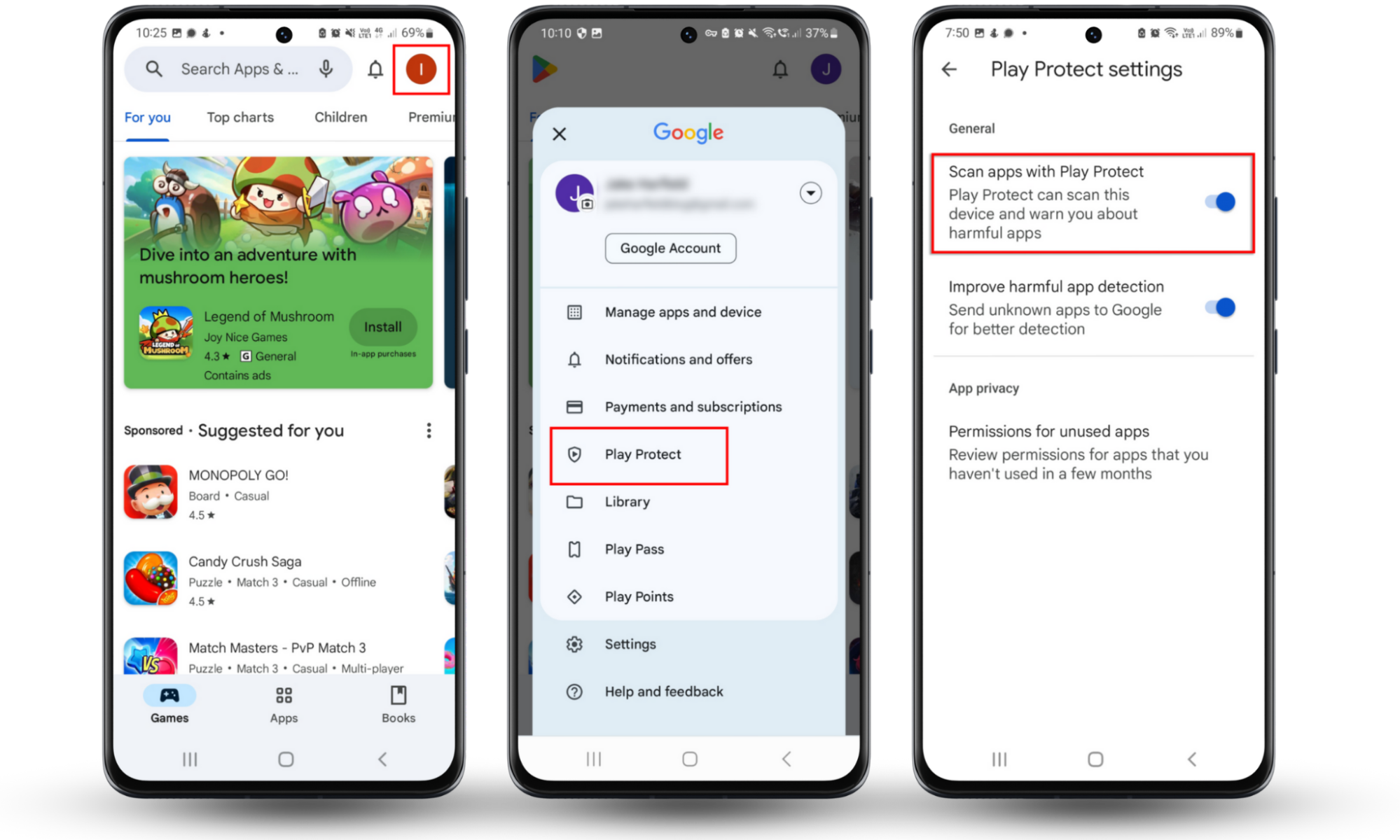
4. Factory reset your phone
If spyware stubbornly refuses removal, a factory reset will wipe your device clean. Just make sure to update anything you want to keep first.
To perform a factory reset:
- Open Settings > General management.
- Press Reset.
- Tap Factory data reset.
- Choose Reset one more time and then follow the instructions.
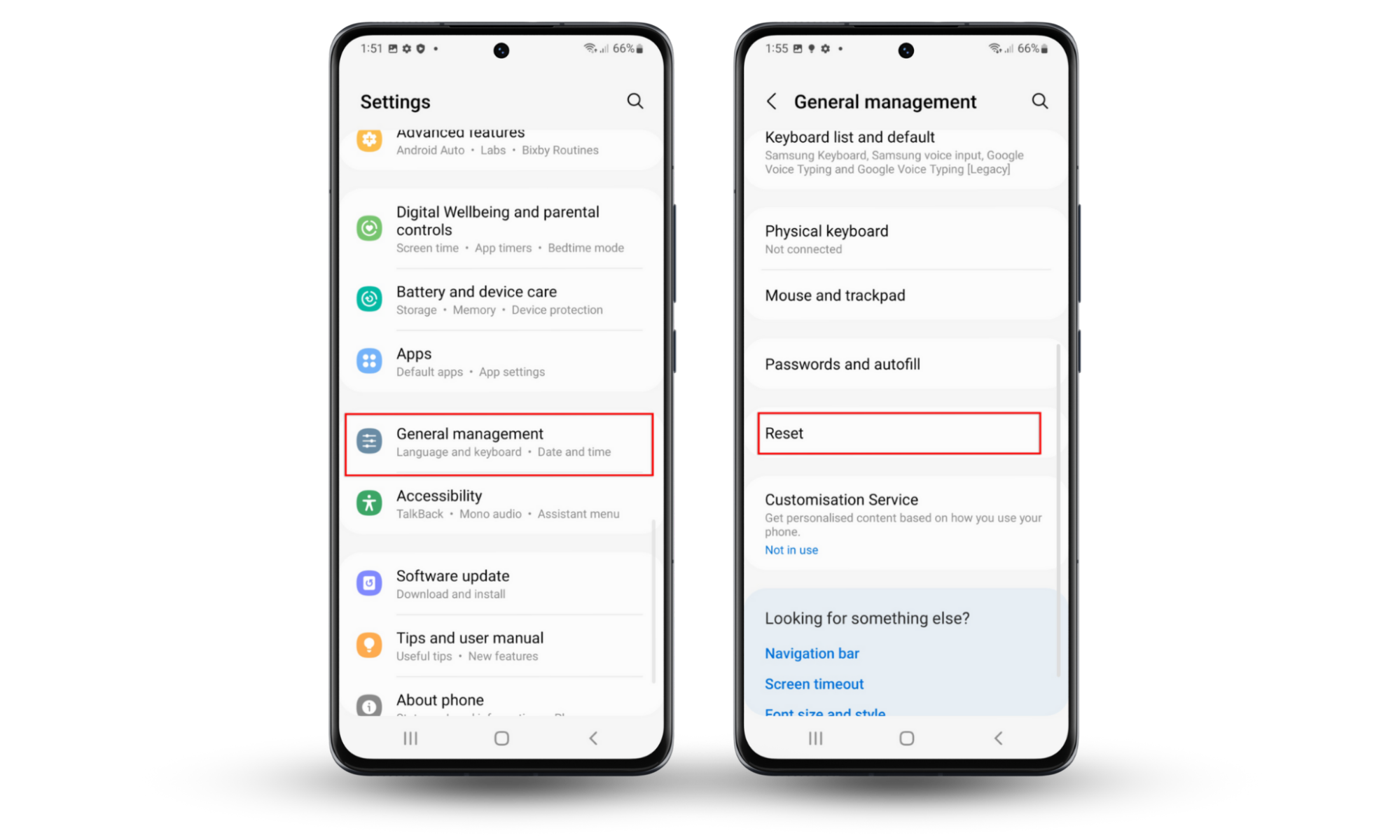
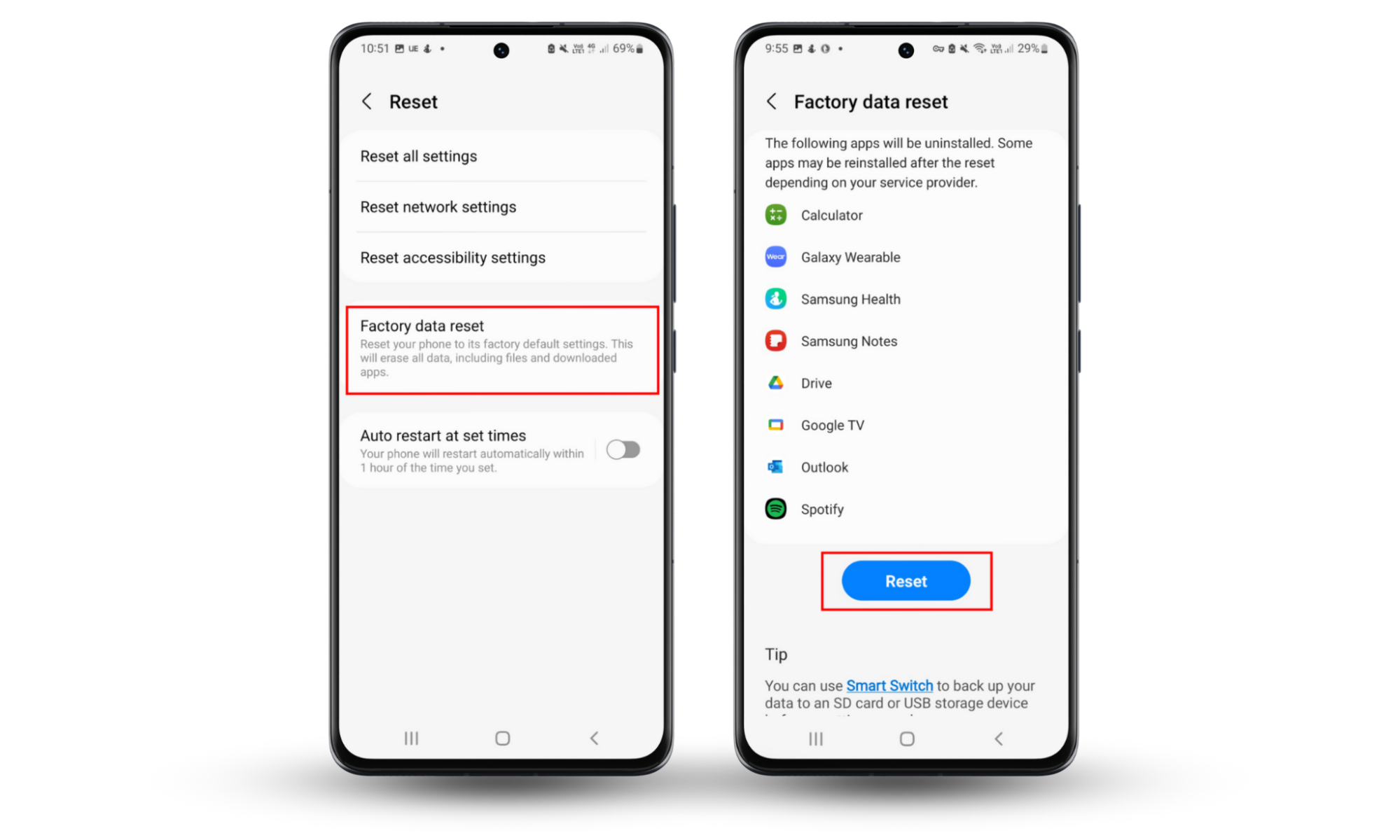
5. Use two-factor authentication
Two-factor authentication (2FA) gives you an extra layer of security against unauthorized sign-ins. Turn it on for any service that supports it, including:
- Email addresses
- Online accounts
- Banking and financial accounts
- Government services
To turn on 2FA, check the settings for each of these accounts and enable it. You’ll be able to set up your phone number or an authenticator app, so you receive a confirmation code before signing in.
Conclusion
Spyware is becoming harder to avoid and even harder to detect. To protect yourself from this invasion of privacy, keep your eye out for signs of infection, update your device, and use Android’s built-in security features. For added peace of mind, download Clario Anti Spy and perform a Spyware scan.


